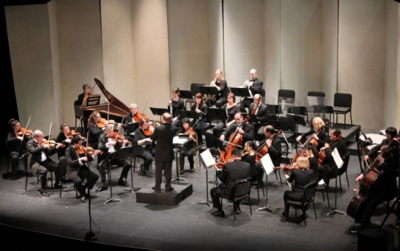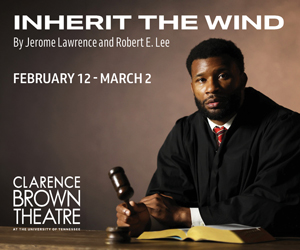What color is a concert?
It’s an odd question, really, when you think about it. But thinking about it almost defeats the point. I’m not a synesthete, or a chromesthete—one that “sees” color associated with certain keys or pitches, although there have been many composers and musicians who have claimed to be. American composer Amy Beach apparently had both perfect pitch and a set of colors for the musical keys. Leonard Bernstein claimed an association between timbre and colors. Quotes from Franz Liszt seemed to indicate he associated musical color with visual color. I can’t make any such claims—my responses are highly circumstantial.
After the recent performance by the KSO of John Luther Adams’ Become Ocean, I will forever associate the piece with the color of the Tennessee Theatre ceiling at the time, a mottled blue-green that drifted down and settled over the audience. In Sunday’s Knoxville Symphony Chamber Orchestra concert (Benjamin Britten’s Simple Symphony and Dvořák’s Serenade for Strings, plus Gabriel Lefkowitz performing Mozart’s Violin Concerto No. 3), the ambience of the Bijou Theatre offered something quite a bit more subtle: warm, soft muted colors punctuated by a crystalline yellow-green. That is the beauty of the acoustic charm of the Bijou—and the charm of a concert played superbly by the KSCO under the always intriguing and satisfying direction of Maestro James Fellenbaum.
Part of the charm of the concert came from its variety. The Britten is certainly simple complexity—easy melodies fraught with delightful textural complications—like the work’s second movement, “Playful Pizzicato.”
The colors softened even further in the Dvořák Serenade for String Orchestra in E Major, a work of gentleness that dances happily and glimmers softly, swells suddenly and recedes gradually, all with a solid tenderness. The orchestra’s performance was a seemingly natural show of carefully controlled exuberance.
Without the Chamber Classics Series and its willingness to program chamber-sized works—and the presence of Gabriel Lefkowitz as concertmaster and potential soloist—I doubt that we would have been hearing the Mozart Violin Concerto No. 3. Nevertheless, the work, along with the No. 4 and No. 5, are gems of Classical Period invention and enticing examples of the composer’s work in the Salzburg years. Lefkowitz gave the work his own palette of instrumental tints and the technical attention it deserved, as well as the deeply satisfying musicality that Mozart would have sought in his own performances.






